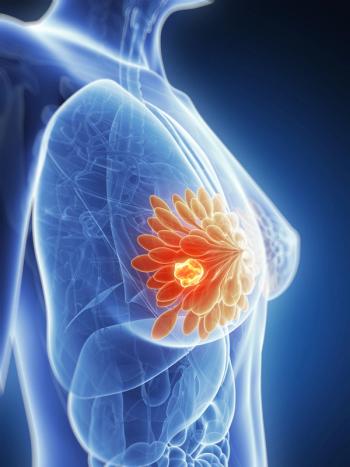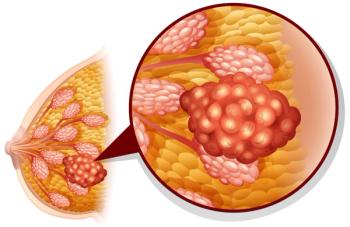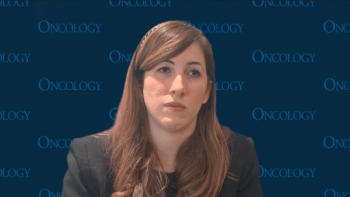
Oncology NEWS International
- Oncology NEWS International Vol 8 No 3
- Volume 8
- Issue 3
Docetaxel, AC Used First-Line for Advanced Breast Cancer
SAN ANTONIO-The addition of docetaxel (Taxotere) to the combination of doxorubicin (Adriamycin) and cyclophosphamide (AC) is an effective and safe first-line therapy for women with metastatic breast cancer, Jean-Marc A.Nabholtz, MD, said at a poster session of the 21st Annual San Antonio Breast Cancer Symposium.
SAN ANTONIOThe addition of docetaxel (Taxotere) to the combination of doxorubicin (Adriamycin) and cyclophosphamide (AC) is an effective and safe first-line therapy for women with metastatic breast cancer, Jean-Marc A.Nabholtz, MD, said at a poster session of the 21st Annual San Antonio Breast Cancer Symposium.
Notably, the combination did not cause an increase in cardiotoxicity, said Dr. Nabholtz, chairman of the Northern Alberta Breast Cancer Program and senior medical oncologist at the Cross Cancer Institute, Edmonton, Alberta, Canada.
The phase II multicenter study included 55 patients with previously untreated metastatic breast cancer who received doxorubicin, 50 mg/m² as an intravenous bolus, followed by cyclophosphamide, 500 mg/m² as an intravenous bolus, and docetaxel, 75 mg/m², 1 hour later as a 1-hour infusion. The regimen, referred to as TAC, was repeated every 3 weeks.
Patients who had received prior chemotherapy for metastatic disease or an anthracycline-containing regimen as adjuvant and/or neoadjuvant chemotherapy were not eligible. The patients median age was 53 years; 32% had received prior adjuvant chemotherapy, and 54% had three or more organs involved.
Of 47 patients evaluable for response, the overall response rate was 77%. The response rate was 79% in the 42 patients with measurable disease. Responses were observed at all sites, especially in patients with liver (80%), lung (90%), visceral (57%), or bone (82%) metastases.
The median duration of response was 59 weeks, and the time to disease progression was 47 weeks. With a median follow-up of 23 months, the median survival has not yet been reached, Dr. Nabholtz said. Overall, 57% of patients were alive at 2-year follow-up.
The combination was relatively well tolerated. The most common adverse effects included brief episodes of neutropenia and fever without a documented infection, which were effectively treated with antibiotics and did not necessitate a decrease in dose intensity.
Despite a high median cumulative dose of docetaxel (561 mg/m²), severe fluid retention was noted in only one patient, and no patients discontinued therapy because of fluid retention. Congestive heart failure occurred in two patients at a cumulative doxorubicin dose of greater than 400 mg/m² and was fatal for one.
Our results in this trial strongly suggest that combining Taxotere with AC enhances overall antitumor activity without increasing side effects, Dr. Nabholtz concluded.
Articles in this issue
over 26 years ago
Strong Upsurge in HIV and Tuberculosis Predictedalmost 27 years ago
NCAB Urges Repeal of Law Requiring Research Data Disclosurealmost 27 years ago
Response to Ontak Leads to Improved QOL in CTCLalmost 27 years ago
Medicare Will Phase in Risk-Adjusted HMO Payments Over 5-Year Periodalmost 27 years ago
Patients Need to Understand Cancer Testing Limitationsalmost 27 years ago
Assessing the Value of the Pain Intensity Assessment Toolsalmost 27 years ago
More Than 500 Clinical Practice Guidelines Now Available On-linealmost 27 years ago
Inefficient Burning of Fossil Fuels Puts Children at Riskalmost 27 years ago
IOM Urges Replacing Race With Ethnicity in Cancer StudiesNewsletter
Stay up to date on recent advances in the multidisciplinary approach to cancer.



















































































